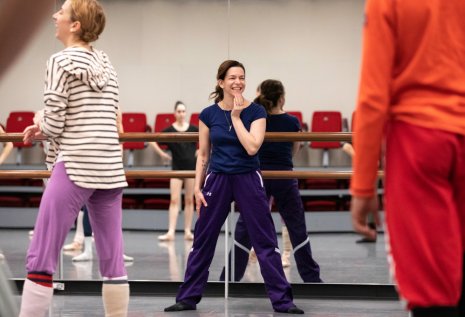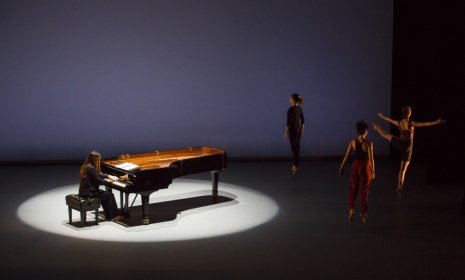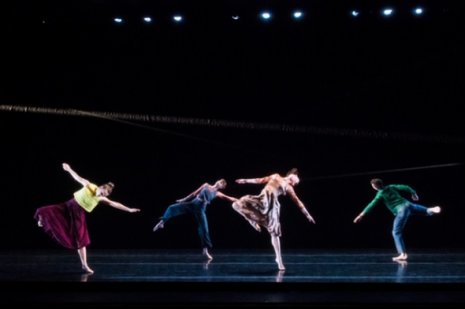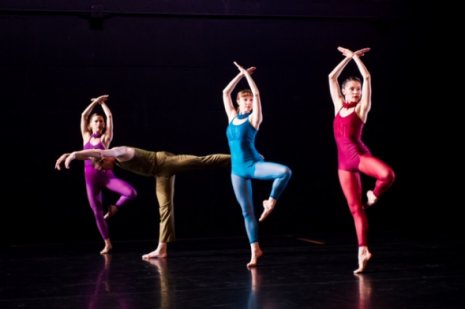Chapter One
Stanford Makishi, vice president for programming at New York City Center, interviews Pam Tanowitz
Thank you so much Stanford…I still have a hard time believing this award is actually happening…so grateful for opportunities to make and create work. You should know one of my favorite quotes before we start:
“Speaking about dance is like nailing Jell-O to the wall,” Merce Cunningham
I am mostly an intuitive artist; here it goes….
Why Goldberg? Well, first Simone [Dinnerstein] came to me, after seeing my work at the Guggenheim. She wanted to collaborate with a choreographer so we had coffee. She laid out all her CDs on the table and said, “This is what I play.” I looked at Goldberg and said, “No way I could EVER do that.”
Then I started thinking…that’s exactly why I should…I talk about taking risks…what does that mean to take risks, push yourself forward in any direction…making dance/art is always risky…something important goes wrong all the time…but - since in dance we have no “product” - all we have is process and I take that seriously.
But after the decision was made, I doubted myself so many times. Through making Goldberg I realized that there is freedom in responding to iconic work. There is freedom when you work against formal structures. I treated each variation differently. I wanted Goldberg to be an unannounced experiment - full of emotion and ideas and romance - but at the same time steering clear of convention and cliché. I was aiming to stretch the confines of established forms, exploring traditional vocabularies and their expectations to locate notions of nostalgia, memory, and the body.
Hi. Yes, usually it’s the other way around. Aaron Mattocks invited her to the Guggenheim show. The dance has original scores by David Lang, Caroline Shaw, and Ted Hearne. She was interested in how I used music. I think the project came to me at the right time. It was a problem to be solved, how could I take on Goldberg but my way. Simone has a very specific way she interprets the music. That was my way into the score and music. I don’t think I could choreograph to another interpretation. One of the biggest challenges of NW for GV [ed. note: the Goldberg piece] was grappling with the iconic achievements of and inevitable comparisons to the past: Simone and Glenn Gould (and many others), myself and Jerome Robbins.
Sent from my iPhone
I think people look at style first, then content. At first glance there are similarities since I use the Cunningham technique and I love clean line and articulate footwork. But the way I make dances is very different. (I assume.) I don’t use chance like Cage and Cunningham. I use aspects of chance, setting up situations in the studio where dancers have freedom. That’s interesting to me.
I also think as I have evolved/matured a little as an artist and hopefully my vision is stronger my deeply personal take on movement grounded in custom is clearer…
Sent from my iPhone
6:38 PM
When audiences are used to something more “identifiable “ like Goldberg...it creates a tension that allows me to work in experimental ways almost in secret
Sent from my iPhone
I actually mean that the dance in my head is never what it ends up being. If I made that dance -it would be the last dance I would make. Something goes wrong in every dance and that propels the next dance. I work with music in different ways
Sometimes I’m inspired by the structure of a composition sometimes it’s a visceral reaction to the music. I always make movements in silence to start while I listen and play music in rehearsal
The dancers and I set landmarks in the music while we work. It starts very free and open before we get super specific.
Sent from my iPhone
7:05 PM
Yes, hearing a piece of music I know if I can connect to it and choreograph to it. My commitment to new music has been a constant throughout my career. Interpreting new music by living composers, as well as the live performance of that music, is an integral part of my work, research, and process. I have very rarely chosen to work with classical music; the exceptions are Schubert’s Wanderer Fantasy and Bach’s Goldberg Variations.
What’s important to me is inviting the Audience in - even with harder or alienating music - to find ways to open the music up and let people in and possibly hear the music differently…a way to have a dialogue. There are many choreographers that make dances to music really well. I try to have a different take the dance/music relationship.
Sometimes I think I work best with limits or boundaries so when I made Goldberg and 4 quartets the work becomes about the response my response to something “known.” The tension between my personal dimension against a formal or historical structure; there is struggle and it all becomes part of the dance.






